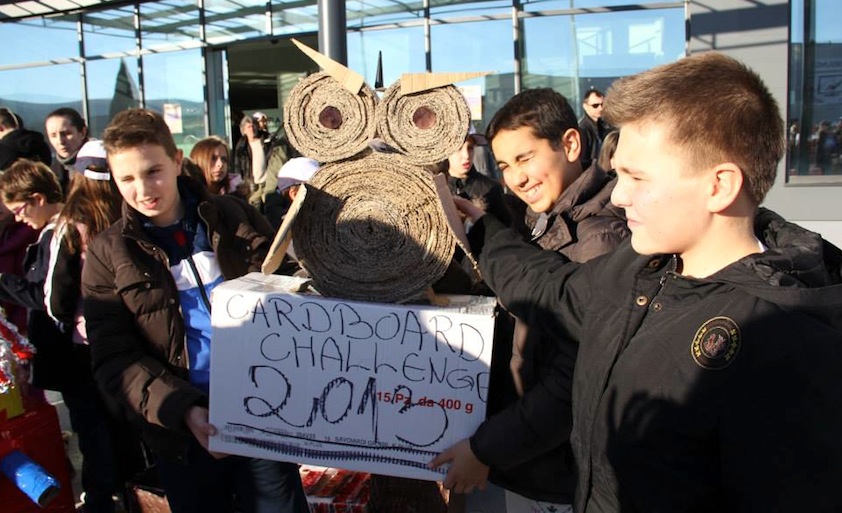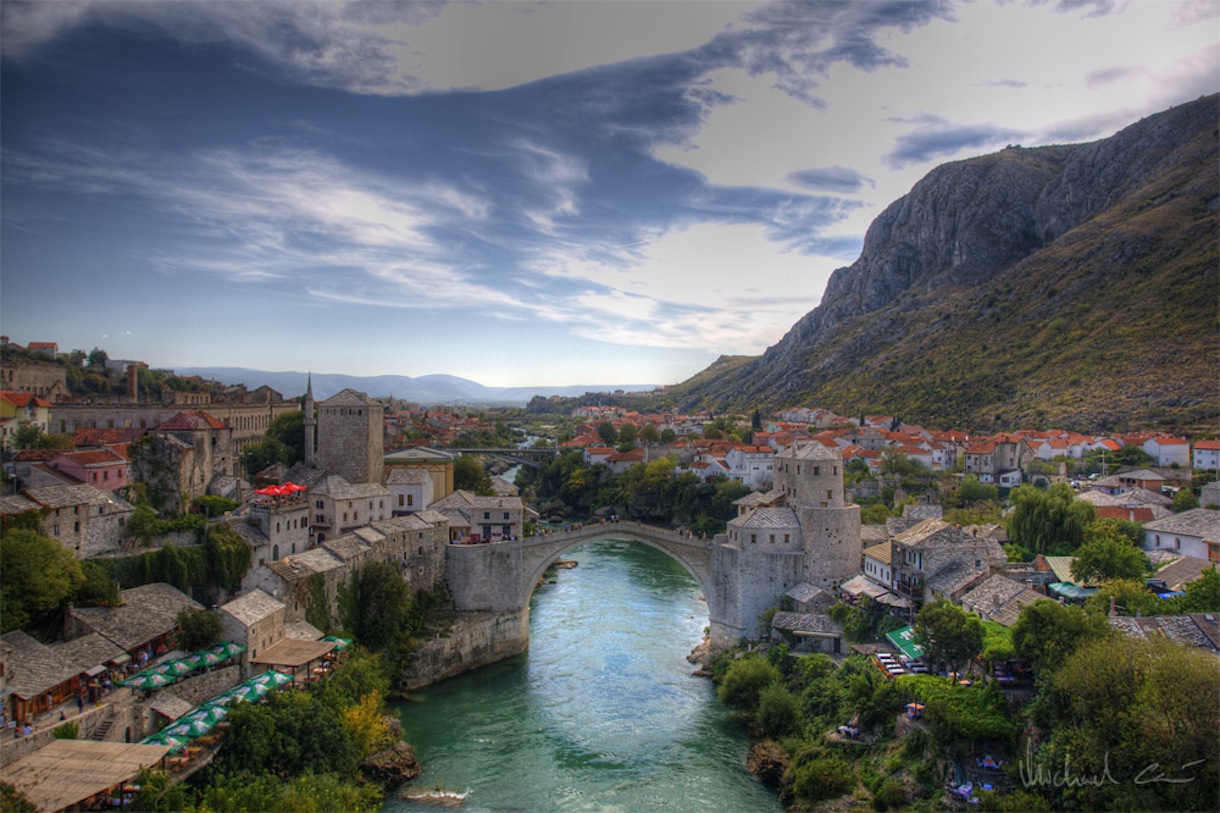At first glance, the picturesque town of Mostar looks as if it’s been plucked right out of a fairy tale. Stone houses with orange rooftops dot the lush green hillsides, and towering medieval structures stand sentry at each end of the Stari Most, a breathtaking 500-year-old limestone bridge. Next to the emerald green waters of the Neretva River, below the Stari Most, a gray cobblestone walkway bustles with vendors and shopkeepers.
When you look a bit closer though, you can see what lies underneath.
Buildings and homes are dented from gunfire, and a small chunk of the bridge sits in a quiet corner on top of the Stari Most. In thick black lettering, the tombstone-like monument reads: “Don’t Forget ’93.”
That year, the people of Mostar went through something unthinkable.
The community was on the front lines of the brutal Bosnian war, and for weeks at a time, bloody battles between the Catholic Croats and Bosniak Muslims raged in the streets. For nine months, the town was under siege, and residents were left without electricity or food. In the fighting, the Stari Most was destroyed.
Before the war, the Bosniaks and Croats lived peacefully alongside one another in Mostar. Today, 19 years after the war’s end, the 100,000-person community has become the most ethnically divided town in all of Bosnia. Croats live on the west side of the river while the Bosniaks live on the east. Rarely do they cross paths.
Each side of the Neretva River has its own postal system, schools, language, phone networks, and even its own electricity providers.
Most signs point toward the continuation of this sharp ethnic divide—but a glimmer of hope for reconciliation lies within the youth of this community.
This was apparent at the first ever Cardboard Challenge in Bosnia.
Matea Peric, a 27-year-old economist born and raised in Mostar, saw Caine’s Arcade and learned about the Global Cardboard Challenge. That’s when the idea struck her: could a day of creating and playing with simple materials reunite the children of Mostar?
Peric reached out to Association Plus, a local organization working to improve society through education and community-building initiatives, to help her plan the event. The first thing they did was send letters to principals at every school in Mostar requesting their participation.
She wasn’t sure what to expect, but 17 out of the 22 schools actually said yes. Peric and Plus continued to prepare, and involved local businesses. And on the day of the Challenge, 260 Croat and Bosniak fifth, sixth and seventh graders came together for a day of imagination, creativity, and play.
“It was a special moment when I saw them coming into the place where we organized the event,” she says. “They were all smiling, carrying boxes, and my heart was, how do you say…as a big as a house.”
The kids broke into teams, collaborated on ideas in their building stations, and made all kinds of toys, arcade games, and a very special owl that took home the sixth-grade grand prize.
Peric says something like this is unimaginable to Bosnian politicians. They say bringing Croats and Bosniaks together under one roof is impossible.
“This proves that it can happen,” she declares.

Students proudly hold up their award-winning cardboard owl at the 2013 Global Cardboard Challenge. (Photo c/o Matea Peric)
Peric not only wanted to bring the communities together; she also wanted to help kids explore their imaginations.
There has been so much political and economic strife in the area that creativity and critical thinking in education have fallen by the wayside, she says.
This is why next year, she is set on hosting another Cardboard Challenge in her town and bringing this day of creativity and imagination to schools across all of Herzegovina—the southern region of Bosnia and Herzegovina.
“We want to engage every school, and continue to bridge the ethnic divide. The children need hope,” she says, “and then everything after that is easy.”
(Top Photo by Michael Caven from Stockholm, Sweden (Bridge in Mostar Uploaded by russavia) [CC-BY-2.0 (https://creativecommons.org/licenses/by/2.0)], via Wikimedia Commons)
This story was written by Jenny Inglee, the Imagination Foundation’s Imagination Curator and The Storybook Editor. The first collection of stories in The Storybook focus on the work of inspiring individuals, schools, and organizations that participated in the 2013 Global Cardboard Challenge.
[primary_link_alt text=”Sign me up for The Storybook” href=”https://eepurl.com/MDElb” style=”margin-left: 0;”]


Recent Comments